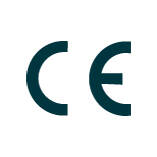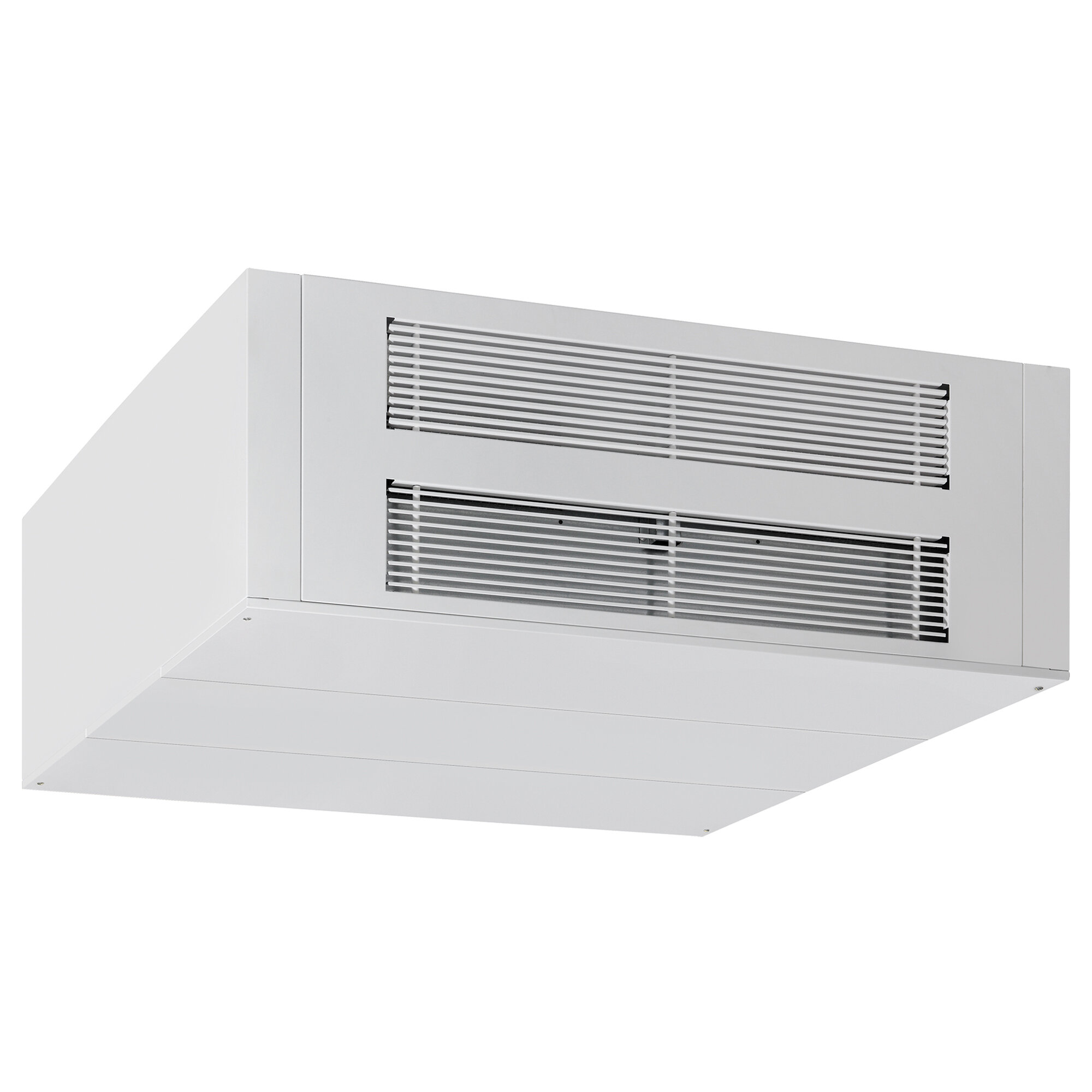
Recupera ONE-60H
Punctual dual-flow CMV unit with heat recovery UNVR (non-residential ventilation unit).
The quality of the air in the interiors
Indoor air quality (IAQ) is a very important parameter, especially given the practical implications that pollutants and allergens can have particularly on children, who are more vulnerable because of an immune system which is not yet able to respond to external attacks adequately. Most students in Italy are exposed to particulate matter in concentrations much higher the values per cubic meter set by the WHO as a hazard threshold.
The increase in chronic respiratory diseases (asthma, chronic acute bronchitis) in industrialized countries even in younger people has led to a series of studies and reports that directly correlate poor air quality in school buildings with numerous diseases.
The European Federation of Allergy and Airways diseases patients' Associations (EFA) estimates that over 64 million European students and 4,5 million teachers are exposed to poor air quality effects in school buildings; for many months a year, students and teachers spend about one-third of their day at school, in a closed environment where ventilation is poor or insufficient.
Poor ventilation during lesson hours affects especially in crowded classes, where it is associated with an increase in CO2 levels and particulate matter, and does not cause chronic bronchitis and asthma only, but it also causes a considerable increase in migraine compared to air perceived to be “good”, and an increase in infections of the respiratory tract.
In some cases, students and teachers can contribute to the improvement of some aspects of the air in the classrooms with a series of “good practices,” respecting a series of measures that are somewhat trivial, but not to be overlooked.
Good habits help, but alone are not sufficient; the realization of adequate Controlled Mechanical Ventilation systems is the ideal solution to renew and purify the circulating air and always guarantee the best quality.
In recent months, the search for the best solution to limit the contagion from COVID-19 in schools has been one of the issues at the center of public attention, but it has only recently begun to talk about a system that can contribute concretely in this regard: Controlled Mechanical Ventilation.
Sanitizing all the surfaces in the rooms with suitable products can be useful, but since the virus spreads through the air we breathe, it is necessary to install systems that help to remove the virus from the air and make the environment completely safe.
As it stands, Controlled Mechanical Ventilation remains one of the best ways to tackle the spread of the virus in a closed environment; it can be concluded that the installation of a CMV system in schools has now become a requirement.
The WHO, in its document “Roadmap to improve and ensure good indoor ventilation in the context of COVID-19” (April 13th, 2021), reaffirms the importance of buildings air changes and ventilation as a strategic part of the prevention and control of the reduction of the transmission risk of COVID-19:
“Understanding and controlling building ventilation can improve the quality of the air we breathe and reduce the risk of indoor health concerns including previous the virus that causes COVID-19 from spreading indoors. This roadmap aims to define the key questions users should allow to assess indoor ventilation and the major steps needed to reach recommended ventilation levels or simply improve indoor air quality (IAQ) in order to reduce the risk of spread of COVID-19.
It also includes recommendations on how to assess and measure the different parameters, specifically in health care, non-residential and residential settings whenever a person is under home care or home forty.”
Also the document “interim strategic guidelines for the prevention and control of SARS-COV-2 infections in school environment (school year 2021-2022)”, published on 01st September 2021, with the collaboration of the Higher Institute of Health, the Ministry of Health, INAIL and the Bruno Kessler's Foundation, reports the following:
“Interiors sanitization is one of the simplest and most widespread universal interventions and has been the subject of recommendations since the pandemic beginning. Compared to the beginning of the pandemic, it is specified that scientific research has led to a greater understanding of how SARS-COV-2 is spread. In detail, in accordance with what the WHO says, to date it is considered that:
- Current scientific evidence suggests that transmission through conaminated surfaces does not contribute significantly to new infections.
- ... [Omissis]
- The transmission mode is more focused on the air route than on the surface; therefore, more attention is required on aspects relating to air sanitation with the general objective of improving air replacements and, more generally, ventilation and the environment, in conjunction with measures recommended by the current regulations in relation to the pandemic situation.”
Recupera ONE-60H is a ventilation unit equipped with heat recovery unit dedicated to air renewal without energy waste, particularly suitable for individual environments where ducted systems cannot be realized.
It consists of:
It consists of:
- self-supporting sheet metal frame with polyethylene insulated internal structure;
- aesthetic covers with matt RAL9003 epoxy paint;
- very high efficiency polypropylene cross-flow counter-current heat exchanger;
- Brushless forward blades centrifugal fans with electronic motor and modulating control, with very high efficiency, high flow rates and low noise levels;
- F7 filters with low load losses, easily extractable by removing the side panels;
- Electric board complete with 4-speed fan management board, anti-freeze, automatic bypass (Free-Cooling operation), temperature probes and automatic reporting of dirty filters.
The unit is supplied as standard with:
- pair of external grids Ø200 mm;
- remote control panel with capacitive touch, for wall or 503 box installation, equipped with humidity sensor, air quality sensor, Wi-Fi interface for app management (coming soon).
Features available from the remote control panel
- On/off (from keypad or contact)
- Fan speed selection: silent/nominal/maximum (booster only by external contact)
- Auto fan speed selection: the air flow will be adjusted based on humidity, air quality detection, or both
- Humidity and air quality (IAQ) setpoint setting
- Change of season
- Brightness adjustment
- Key lock
Technical data
- Power supply: 230 Vac, 50 Hz
- Protection rating: IPX2
- Operating ambient temperature: from -20 to 40 °C
- Dimensions WxHxD: 1033x981x404 mm
- Weight: 80 kg
| Model | Nominal air flow rate [m³/h] | Nominal electric power input [W] | Thermal efficiency of heat recovery [%] | Casing sound power level Lwa [dB (A)] | Q.ty per pack. | Code | |
|---|---|---|---|---|---|---|---|
Model Recupera ONE-60H | Nominal air flow rate [m³/h] 500 | Nominal electric power input [W] 180 | Thermal efficiency of heat recovery [%] 85 | Casing sound power level Lwa [dB (A)] 69 | Q.ty per pack. 1 pz | Code 07810650 |
| Technical specifications as per Regulation EU no. 1253/2014. The thermal efficiency of heat recovery is determined under the following conditions: external air temperature 5 ° C, ambient air temperature 25 ° C (Wet bulb <14 ° C). |





